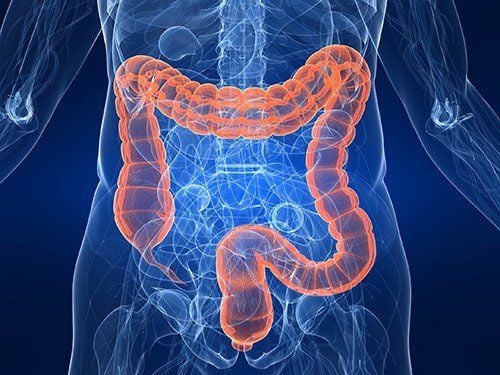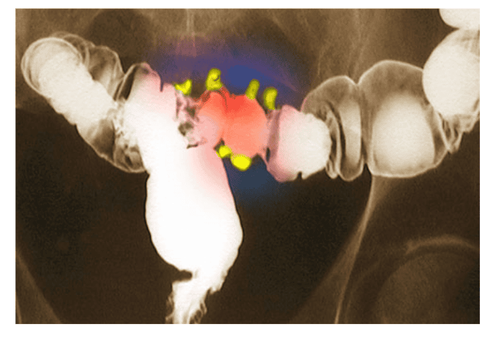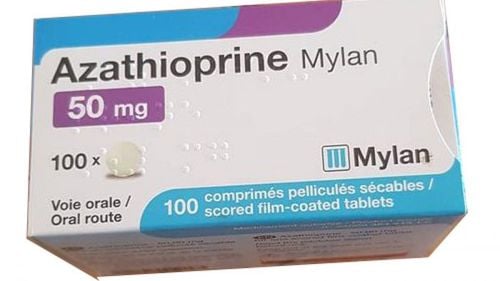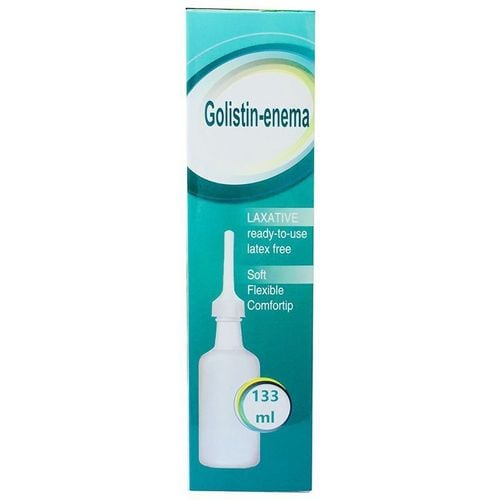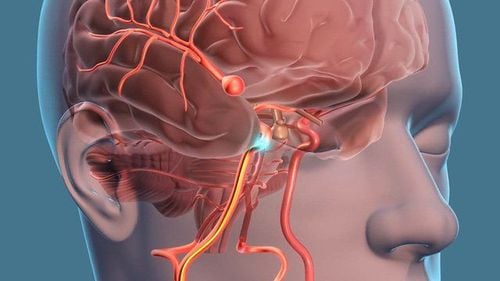This is an automatically translated article.
The article was professionally consulted by resident Doctor Nguyen Quynh Giang - Department of Diagnostic Imaging and Nuclear Medicine - Vinmec Times City International Hospital. Dr. Giang has many years of experience in the field of diagnostic imaging, especially in the field of multi-segment computed tomography, magnetic resonance.Crohn's disease causes inflammation and irritation in the digestive tract, most commonly in the last part of the small intestine. Symptoms of Crohn's disease are very similar to ulcerative colitis with symptoms such as abdominal pain, diarrhea, fever... Therefore, diagnostic imaging tests such as abdominal ultrasound, colonoscopy, CT, MRI, etc. MR tomography will help doctors make an accurate diagnosis and predict appropriate and effective treatment.
1. What is Crohn's disease?
Crohn's disease is a type of inflammatory bowel disease (IBD) that causes inflammation and irritation in the gastrointestinal (GI) tract. It occurs most commonly in the last part of the small intestine, also known as the ileum.The most common symptoms of Crohn's disease are abdominal pain, usually in the lower right abdomen, and diarrhea. Other symptoms include:
Rectal bleeding Weight loss Fever Symptoms of Crohn's disease are caused by inappropriate activation of the immune system. The cause is currently unknown, but there is evidence that genetic factors play an important role in the condition of the disease.
The symptoms of Crohn's disease are very similar to those of ulcerative colitis, however Crohn's disease can occur anywhere along the digestive tract, from the mouth to the anus, while ulcerative colitis is confined to in the large intestine (colon). Crohn's disease can lead to ulcers deep in the intestinal tract and a "cobblestone" appearance. Inflammation can lead to a build-up of scar tissue over time, while also slowing the movement of food through the intestines and causing severe constipation.
Crohn's disease can affect both children and adults. About 20% of people diagnosed with symptoms have symptoms before the age of 20.

2. Diagnosis of Crohn's Disease
There is no single diagnostic test for Crohn's disease. Symptoms of the disease will vary from person to person. As a result, it can take a long time to get an accurate diagnosis of Crohn's disease.The doctor will probably start the exam by taking a medical history. They may also conduct a physical exam, or order blood and stool tests. This can help them rule out other possible causes and not symptoms of Crohn's disease.
To accurately diagnose Crohn's disease, your doctor will need to see what's happening inside the digestive tract. They can then use tests that create pictures of the digestive tract from the outside, such as X-rays. They can also use an endoscope to look inside the digestive tract with an endoscopy. colonoscopy or sigmoidoscopy. Furthermore, when performing these tests, they may collect tissue samples for laboratory testing.
2.1. Blood tests Blood tests can help your doctor check for signs of infection or antibodies in your blood. If you have elevated levels of white blood cells or platelets in your blood, it could be a sign of infection or inflammation in your body. Inflammation can be caused by Crohn's disease, or other inflammatory conditions. Your doctor may use a blood test to diagnose Crohn's disease.

For example, a stool culture can help identify a bacterial infection. Stool and parasite testing can help learn about parasitic infections in the body.
2.3. Flexible sigmoidoscopy The test is done by inserting a sigmoidoscope (a flexible tube with a small camera at the end) into the rectum to view the lower colon and rectum.
2.4. Colonoscopy Colonoscopy allows the doctor to view the entire colon and the last part of the ileum with a thin, flexible, lighted tube with an attached camera. During a colonoscopy, your doctor may also take small tissue samples (biopsy) for laboratory analysis to help make a more accurate diagnosis. Test results, if there are clusters of inflammatory cells called granulomas, will help confirm the diagnosis of Crohn's.
2.5. Whole-body CT scan The test is done with a special type of X-ray image that creates detailed pictures of the pelvis, abdomen, or chest. In addition, you may be given an injection of contrast material to make your digestive tract and abdominal organs more visible in the images. CT enterography is a special type of CT scan that is capable of providing a better picture of the small intestine. This test has replaced barium x-ray in many medical centers.
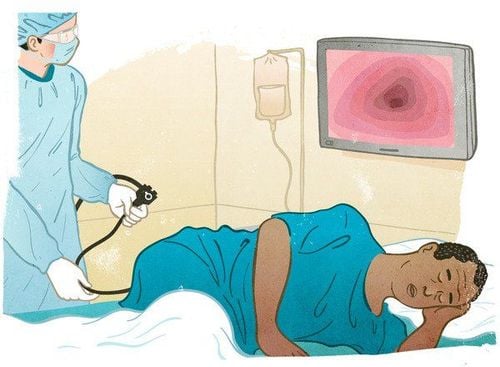
MR tomography is a special type of MRI done with contrast material to create detailed images of the small intestine.
For infants and young children this test usually requires sedation or anesthesia to complete the MRI examination without moving. However, this will depend on the child's age, intellectual development, and the type of test. Sedation may be provided in many medical facilities. But to be safe during anesthesia, medical facilities need a specialist in sedation or anesthesia for children.
Or some facilities may have staff members working with children to help avoid the need for anesthesia or sedation. They prepared the children by showing them a dummy MRI scanner and playing noises they could hear during the test. Furthermore, they also answer any questions and explain the necessary procedures for the child to relieve anxiety. Some facilities also provide goggles or headphones so that children can watch movies while the MRI is being performed. This helps the child to stay still and gives a better quality image.
2.7. Upper gastrointestinal (GI) X-ray This test looks at X-rays of the esophagus, stomach, and first part of the small intestine, also known as the duodenum. Images are created with a special type of X-ray called fluoroscopy, and a contrast agent is used orally such as barium.
Monitoring of the small intestine, in which an oral contrast agent such as barium is inserted into the lower part of the small intestine (jejunum and ileum) is viewed with abdominal radiographs (X-rays) and fluoroscopy.
An X-ray of the lower gastrointestinal tract, also known as a GI enema or low barium, is an X-ray examination of the large intestine, also known as the colon. This test evaluates the right or ascending colon, transverse colon, left or descending colon, sigmoid colon, and rectum. The appendix and the end of the small intestine can sometimes also be seen.
Infants and children may be ordered to have upper and lower GI X-rays. Usually, there's no special preparation, but your doctor will give you detailed instructions if needed. The use of barium and radiographic media was similar to that described for adults.

3. Treatment of Crohn's Disease
Although there is no cure for Crohn's disease, current treatments can improve symptoms, control inflammation, and correct nutritional deficiencies. Among them are how common treatment options are:Medications: Anti-inflammatory drugs and antibiotics can help control inflammation, suppress the immune system, and treat bacterial overgrowth in the small intestine. . Proctectomy: This surgical procedure involves removing the rectum and part of the colon or the entire colon. After a colectomy, the surgeon will perform a bowel resection, and use a procedure so that the small intestine is connected to an opening in the lower abdomen. A bag is then attached to the opening and worn outside the body to collect stool. Sometimes, the small intestine can be attached to the anus so that a pouch is not needed. Intestinal resection: The diseased part of the intestine is removed and the ends of the healthy sections are connected. Nutritional supplements: High-calorie liquid formulations or intravenous nutrition are sometimes given to patients with Crohn's disease to supply the inflamed intestines from solid foods. Crohn's disease is a chronic inflammatory bowel disease of an autoimmune nature. Inflammatory lesions of the intestinal lining can sometimes lead to dangerous Crohn's disease complications. Therefore, early detection of Crohn's disease for timely treatment is very important.
Vinmec International General Hospital is one of the hospitals with the function of examining, treating and screening many diseases, including digestive tract diseases. Especially to bring high efficiency in disease examination and treatment, Vinmec is now fully equipped with modern imaging equipment such as ultrasound machine, CT machine, MRI machine, endoscope.
When accurate results are available and the cause of the disease is found, doctors will coordinate with many different specialties to advise on the most effective treatment regimen to ensure the health of customers.
>> See more: Treatment for high-risk Crohn's patients - Posted by Doctor Mai Vien Phuong - Department of Examination & Internal Medicine - Vinmec Central Park International General Hospital.
Please dial HOTLINE for more information or register for an appointment HERE. Download MyVinmec app to make appointments faster and to manage your bookings easily.
References: radiologyinfo.org, mayoclinic.org, healthline.com





